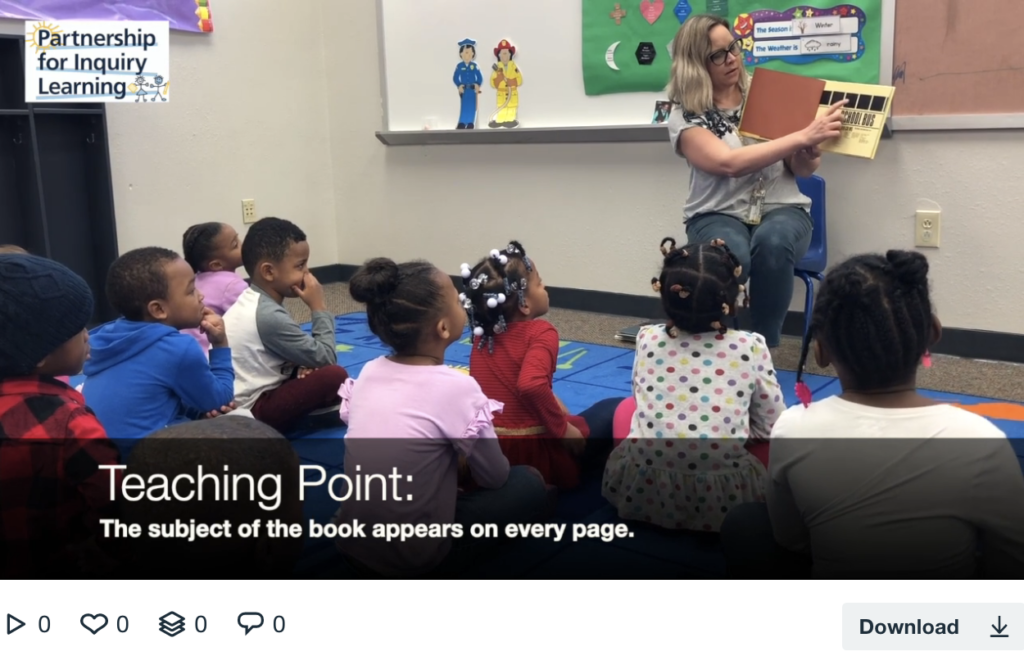Literacy consultants Matt Glover and Kathy Collins introduced us to writing-focused read-alouds, a cornerstone of early childhood writing instruction. A writing-focused read-aloud is simply a read-aloud with strategic pauses where we help students notice strategies and decisions authors and illustrators make.
You might already be doing reading-focused read-alouds, even if you hadn’t heard that term before you read it here. Many teachers, librarians, and family caregivers instinctively pause when reading a story to ask questions or notice things about an illustration that might help children comprehend it. We might say, What do you think is going to happen? or Oh, look at that frown on his face. I think he feels sad.
A writing-focused read-aloud is a bit like that, except we’re drawing attention to the book’s composition. Here’s one example of a writing-focused read-aloud from the Partnership’s visits to area schools:

No. Read-alouds have many different purposes in early childhood education, and not all are focused on writing instruction. Researchers haven’t identified a magic number that we should strive for, but balance is key. Perhaps your class enjoys 10 read-alouds per week, and you use them to teach reading, writing, and social-emotional understanding. You decide how many to devote to each purpose, and spread them out accordingly.
Many teachers choose books students are already familiar with for their writing-focused read-alouds, especially if reading a story, because it’s easier to look closely at the writing once everyone understands the text. This is an important lesson for readers and writers too: We can revisit the same text many times, and discover something new each time.
In the sample video above, Libby noticed one or more things per 2-page spread in the book she was reading, but most of her noticings were related to the teaching point that she wanted to make. The big idea she wanted students to leave the read-aloud with is that whatever they choose to write about will usually appear on each page of their book.
While helping the young writers see this, she subtly pointed out some differences among the pictures, too—the way Donald Crews suggested the image of a bus on the title page, the way he placed the buses on city streets, the way he showed the difference between coming and going, the way he showed the bus was full of children…she even invited students to think about why there was no bus on the page without a bus. By doing this, she helped students begin to imagine how to place the subject on every page without making every page look identical.
There are many other teaching points that Libby could make using School Bus by Donald Crews, but she only focused on one this day. That’s an important distinction for us to make: one teaching point per read-aloud but not per book. Libby will likely re-use this book again to make a new teaching point to the same class. When she does, she’ll send a powerful message about both writing and re-reading. Books are chock full of things to discover, and it takes a lot of time and effort to write—and comprehend—one well.
With practice it gets easier to read like a writer and notice the moves authors and illustrators make that affect us as readers. It involves asking questions like Why did the author do that instead of something else? And How did the author make me think or react as I did?
You can ask these questions as you read any text, so you don’t need to buy specific books or find examples of specific teaching points—though that can be a good starting point for some teachers.
We’ll dig into this topic more deeply in a future post.
